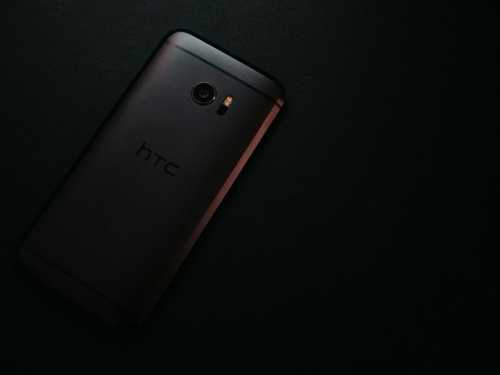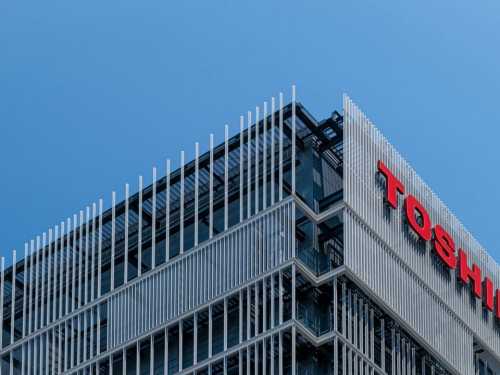
HTC was once a real star in the world of technology. It was she who created the world's first Android smartphone, at the peak of success she surpassed Nokia in market capitalization and demonstrated high competitiveness, and her devices were in the pockets of millions. But where is HTC today? It can't be found on store shelves, the name has become dusty, and silence has replaced its former glory. How did this happen?
The birth of the company
HTC (High Tech Computer Corporation) was born in 1997 in Taiwan. It was founded by Cher Wang, the daughter of one of the richest people in the country, H. T. Cho, and Peter Cho. At first, the company did not chase fame: they made laptops and handheld computers for big brands like HP, Compaq, Palm, Dell, as well as devices for operators like Vodafone and O2. Back then, companies could simply buy batches of finished devices from HTC and release them under their own brand. The name of HTC itself did not shine on them, but even then it was clear that the guys knew their stuff.
Golden Era
In the early 2000s, HTC began to emerge. It had Qtek brands for Europe and the US, Dopod for Asia, and in 2006 the company merged everything under the HTC name. They became a major partner of Microsoft, releasing Windows Mobile devices — bulky, with styluses, but popular among those who loved technology. The HTC TyTN of 2006 supported 3G. It was a premium phone with a large screen and a good camera.
The real boom began in 2008, when HTC, together with Google, released the HTC Dream (aka T-Mobile G1), the world's first Android smartphone. With a slide-out keyboard and raw Android 1.0, it sold a million units in half a year.
It was a brilliant move: while Apple was proud of its iPhone and Nokia clung to Symbian, HTC and Google offered an open platform that gave freedom to developers and users.
HTC took Android under its wing, creating the Sense shell. In 2009, the legendary HTC HD2 was released. This monster on Windows Mobile became a cult: fans installed Android, Ubuntu, even MIUI on it. The HD2 still warms the soul of those who lived through those times.
Building on its success, the company released the Nexus One in 2010 — stylish, powerful, with pure Android.
HTC has become synonymous with innovation: one of the world's first smartphones with support for 4G networks (the Evo 4G model worked on the WiMAX network, one of the first technologies promoted under the 4G brand), the HTC Sense shell, which made Android more beautiful and convenient, and cooperation with Beats Audio confirmed the company's status as a technological leader.
By 2011, HTC's success was obvious: the company had overtaken Nokia in market capitalization, and in the US their share of the smartphone market reached an impressive 24%. It seemed that the Taiwanese were about to take over the world. However, even then the first signs of future problems began to appear. Their numerous lines – Desire, Sensation, Hero, Legend – began to confuse consumers. In stores, people were lost: which of a dozen models to choose? While Apple offered one iPhone per year, and Samsung successfully promoted its only flagship Galaxy S line, HTC even got lost among the multitude of other models with similar names.
Cracks in the foundation
In 2012, HTC tried to clean up its cluttered lineup by launching a single One series, which included the flagship One X, the mid-range One S, and the budget One V. The idea was good, but with no memory card slot and a 1,800 mAh battery (in the One X), sales were sluggish. Revenue in the third quarter of 2012 fell from $625 million to $133 million.
While Samsung and Apple were gaining strength, HTC decided that their trump card was unique design and premium quality. In 2013, they released the HTC One M7, a smartphone that is still fondly remembered.
Aluminum body, gorgeous screen, stereo speakers — it was like a work of art. But here's the trouble: due to problems with the supply of unique components for the camera and body, the start of sales was delayed, which allowed the Samsung Galaxy S4 to capture the market. In addition, the camera with “ultrapixels” (fewer megapixels, but more light) did not meet expectations, and the price was biting. Sales were going, but not as briskly as those of competitors. 5 million units were sold — a success for HTC, but the iPhone 5 went to 5 million in three days, and the Galaxy S4 — to 10 million in a month. By the beginning of 2013, even before the full launch of the flagship M7, HTC's share in the US had already fallen to 9.3%. However, the third quarter of 2013 brought the company its first losses in its history — $101 million. Peter Chou said that “the worst is behind us,” but this was self-deception.
And then HTC started to get stubborn. Instead of following trends — reducing bezels, experimenting with new features — they continued to bend their line. The HTC One M8 in 2014 was good, but too similar to the M7, sales were disappointing, and advertising was strange and ineffective (only the confusing campaign with Robert Downey Jr. is worth it), which ultimately led to losses.
In 2015, the M9 looked like a throwback to the past: the same thick bezels, the same design, when the market was already demanding something fresh. The smartphone was a disaster: the Snapdragon 810 processor overheated, the camera took pictures worse than the iPhone 6, and the display was inferior to competitors.
Losses rose to a record $258 million in the second quarter of 2015. Meanwhile, Samsung was churning out the Galaxy with its huge screens, and Apple was polishing the iPhone to perfection. HTC seemed stuck in its past.
HTC's marketing was also lacking. Their slogan, “Quietly Brilliant,” perfectly encapsulated the problem. They were betting that their devices would speak for themselves—that quality and innovation would be noticed without a lot of hype. But in a world where Samsung and Apple spent millions on flashy campaigns, that modesty backfired. Customers simply didn't see how HTC was better than its competitors, and the brand began to fade into the background of its noisy rivals.
Latest attempts
But HTC tried to save itself. The HTC 10 (2016) received a new design and an improved camera, but the high price and fierce competition sank it. A temporary salvation was a partnership with Google, under which HTC produced the Pixel and Pixel XL smartphones. This brought the company significant income, but only postponed the inevitable.
The market has already been divided between Apple, Samsung, and Chinese newcomers such as Xiaomi and Huawei, who have aggressively won over the audience by offering devices with flagship features at a much lower price.
In 2017, the company released the good HTC U Ultra, HTC U11, and HTC U11+, but it was too late to save the day.
That same year, HTC made a desperate move: it sold part of its mobile division to Google for $1.1 billion. The deal included a team of about 2,000 engineers, many of whom had already worked on the Pixel smartphones, as well as a non-exclusive license to HTC's intellectual property. HTC kept the brand and the right to produce smartphones, but it essentially sold its brains to competitors.
The last flagship, the HTC U12+, was released in 2018. It was not bad, but it went unnoticed against the background of devices from other manufacturers. The company began to withdraw from large markets, losing distributors and stores. The mobile division slowly faded, and HTC switched to virtual reality with its Vive helmet. VR became a new fulcrum for them: this niche allowed the company to reorient itself and find its audience, although it did not return HTC to its former financial heights. But smartphones? They turned into very rare mid-budget models that no one particularly noticed.
This is how the story of one of the pioneers of the mobile revolution ended – a company that once stood at the origins of Android and could compete with the giants, but was unable to keep success in its hands.






